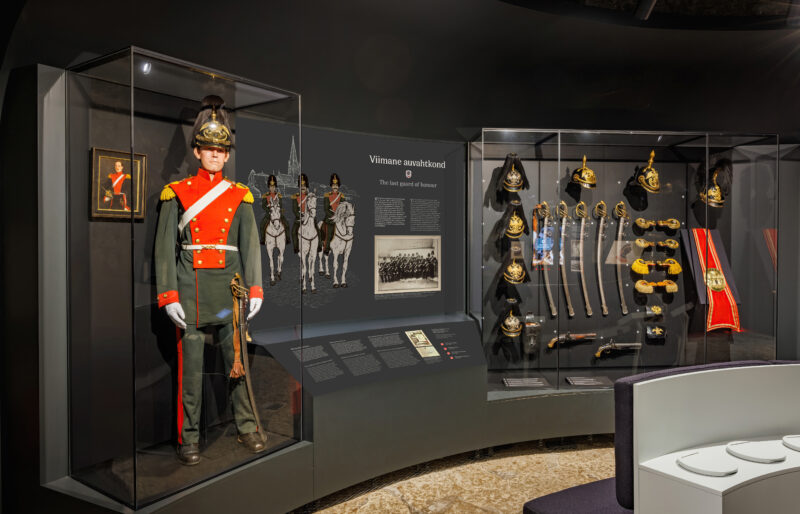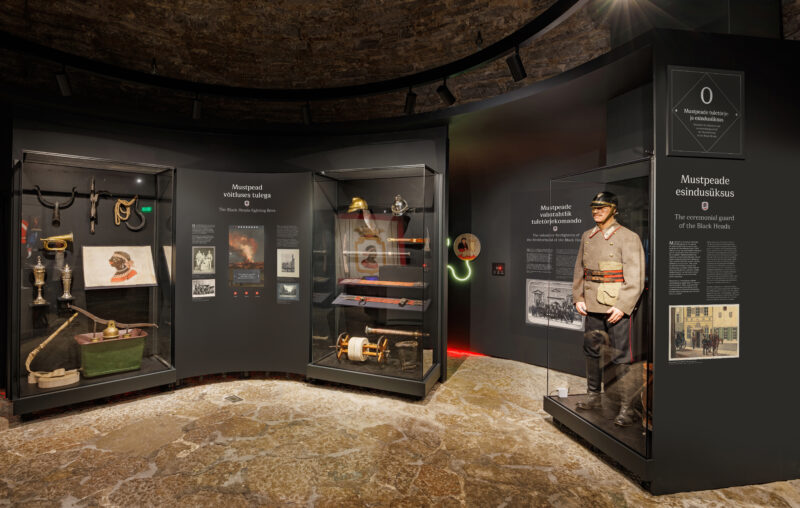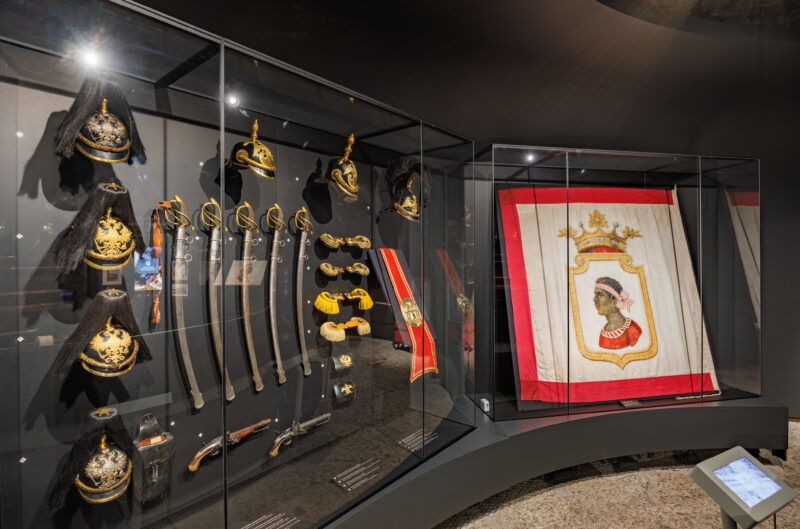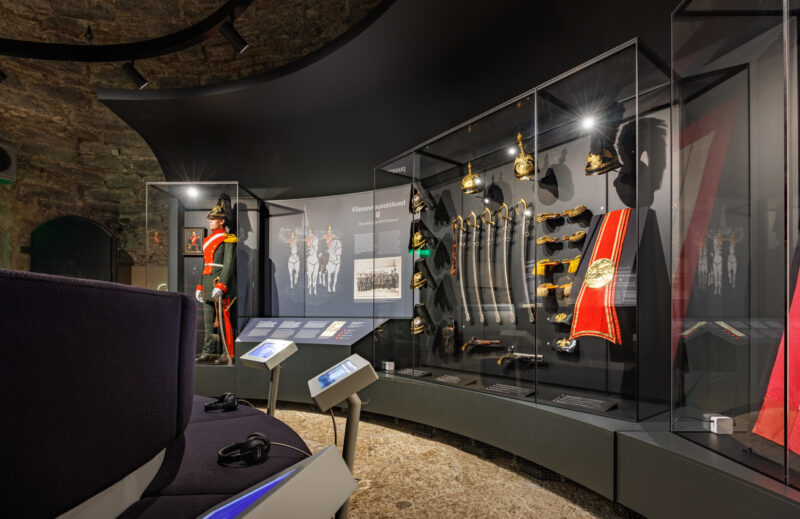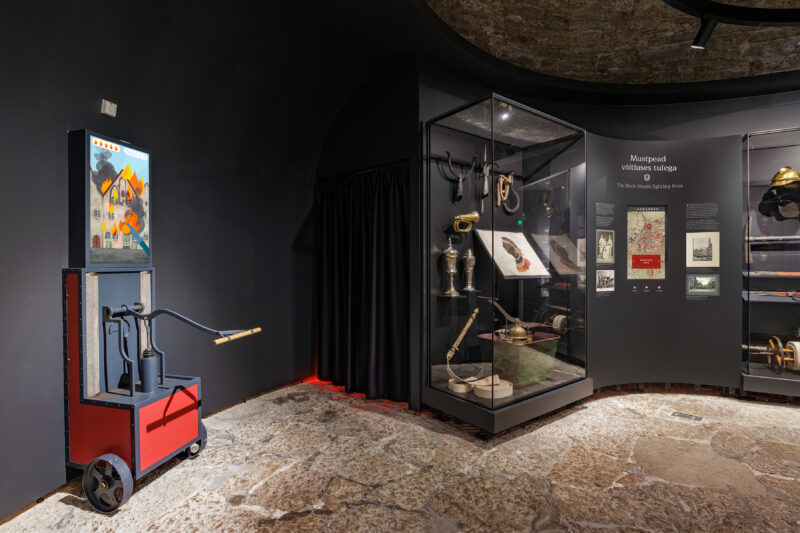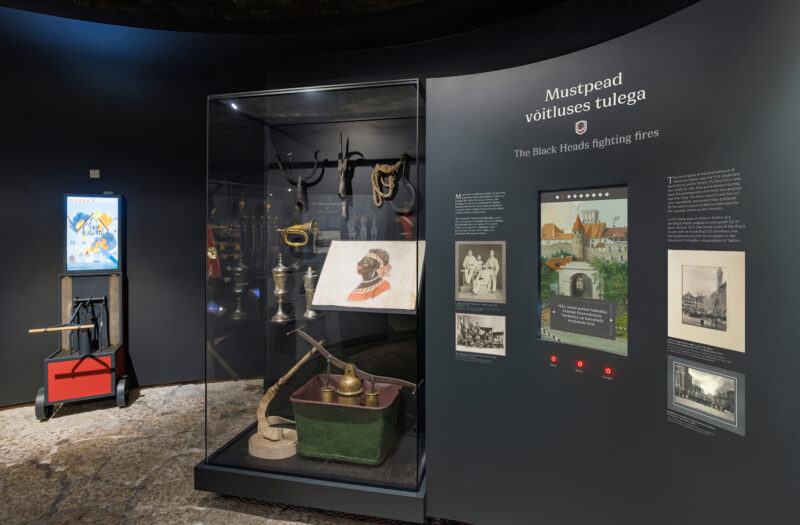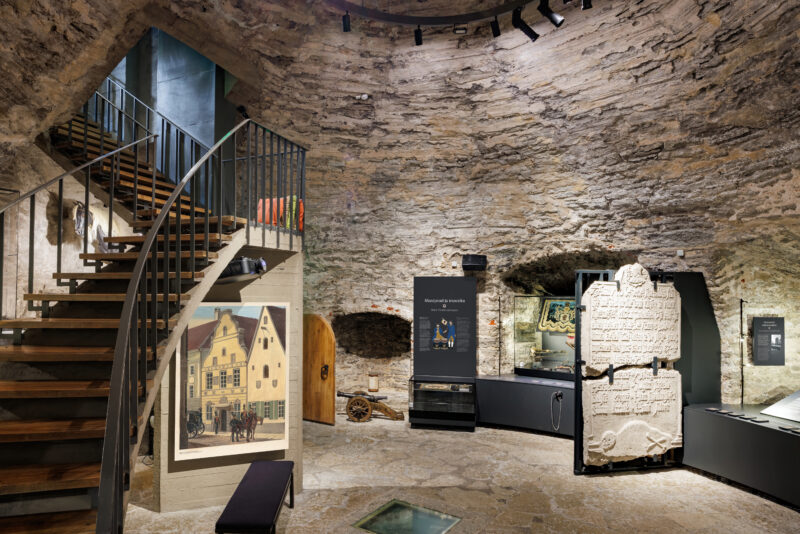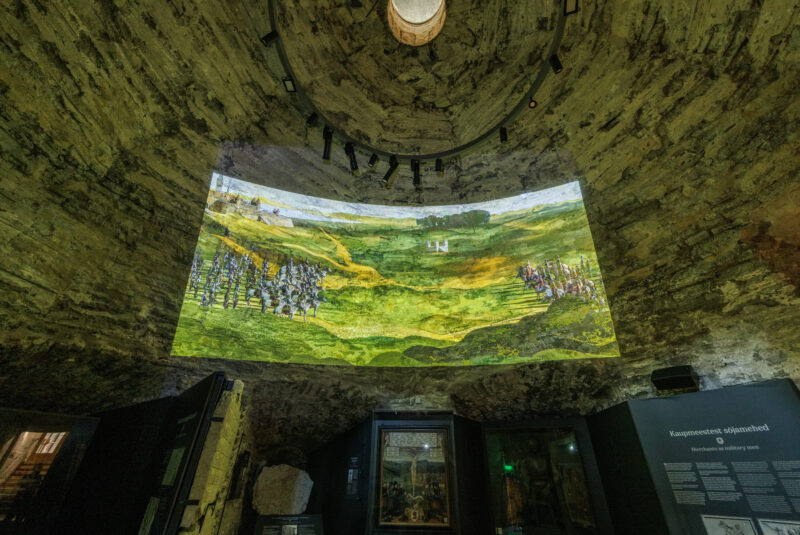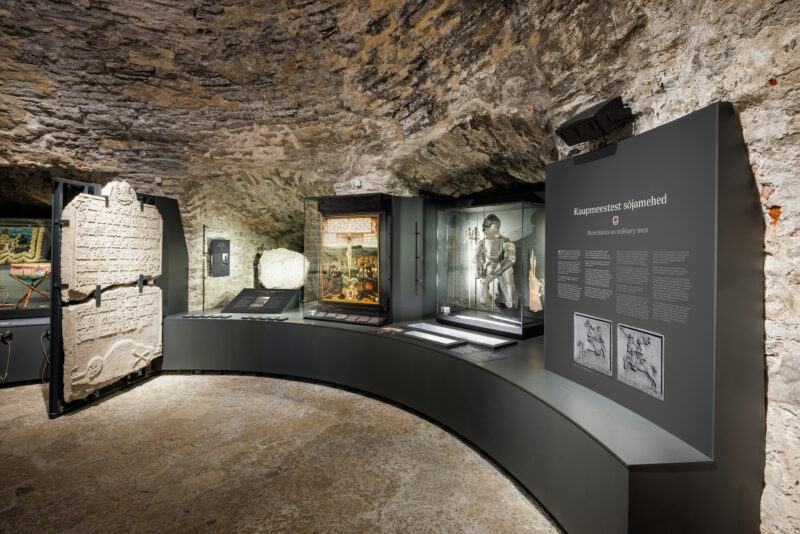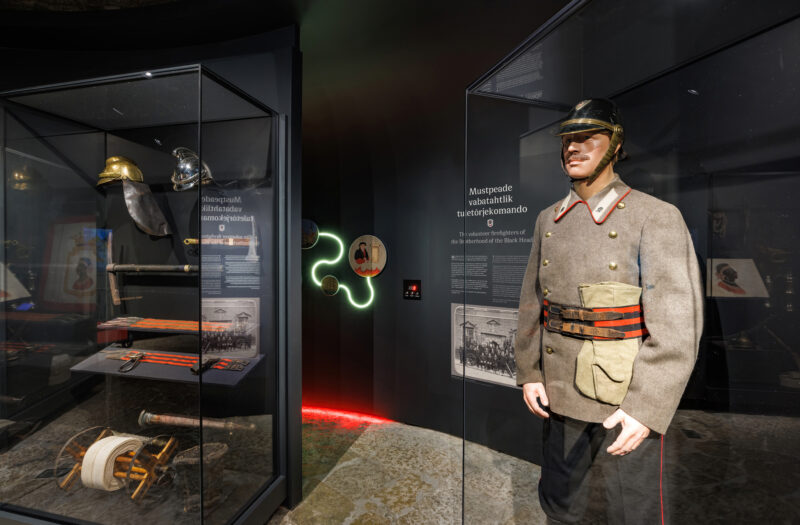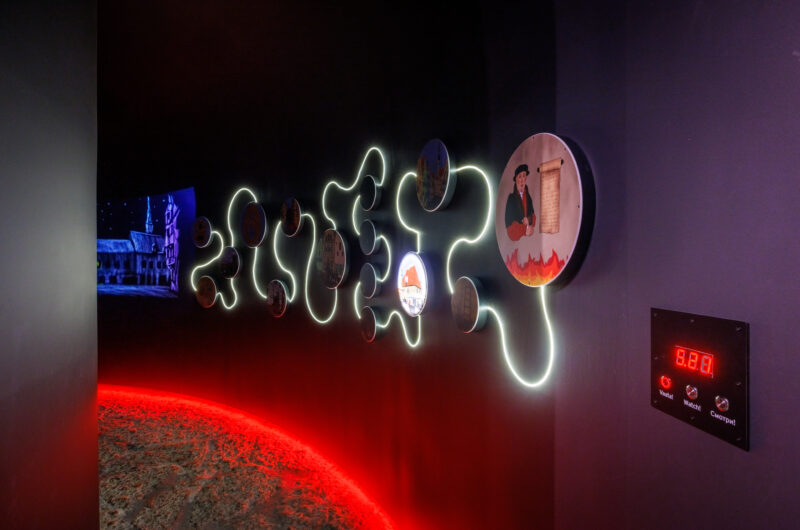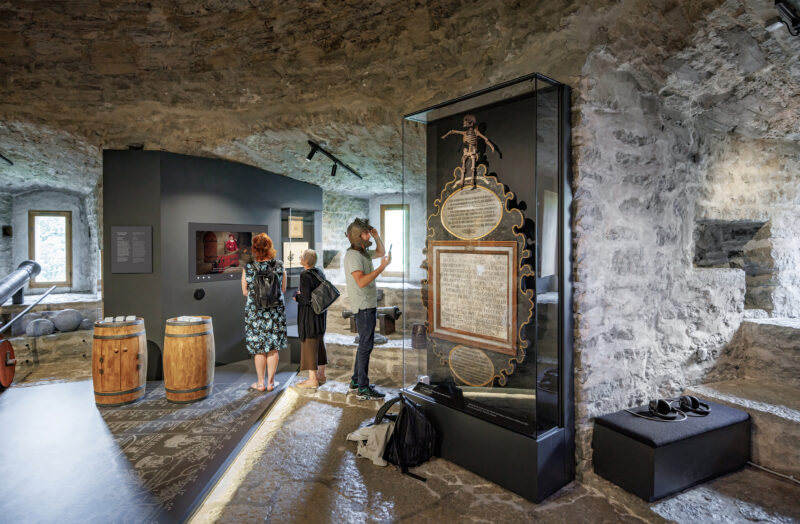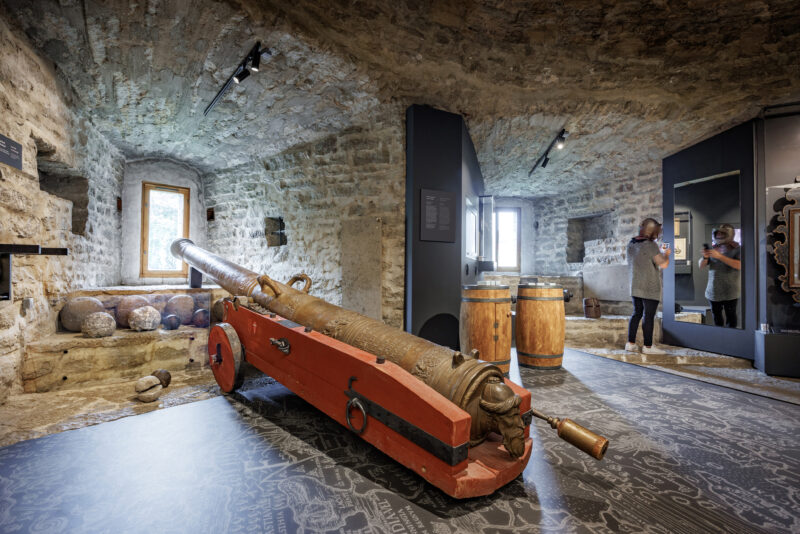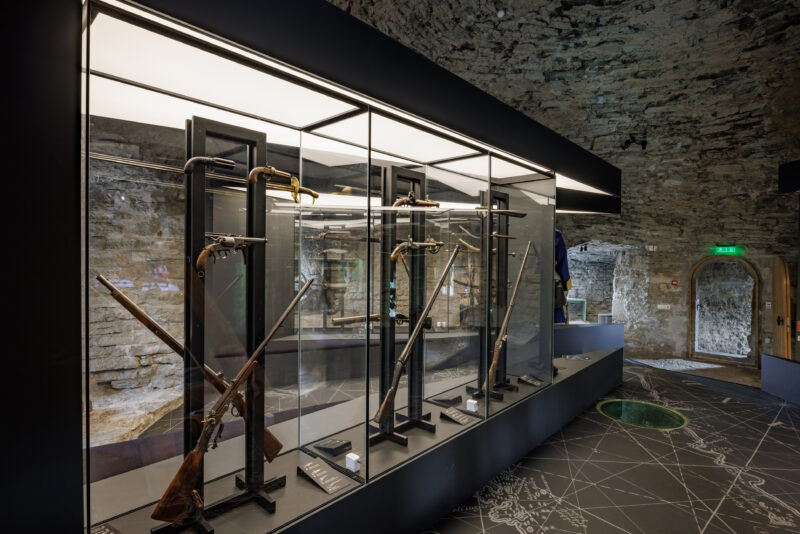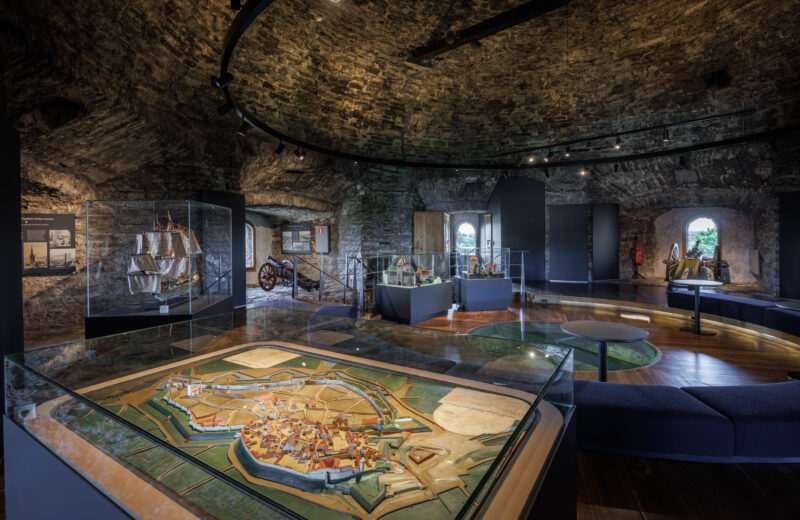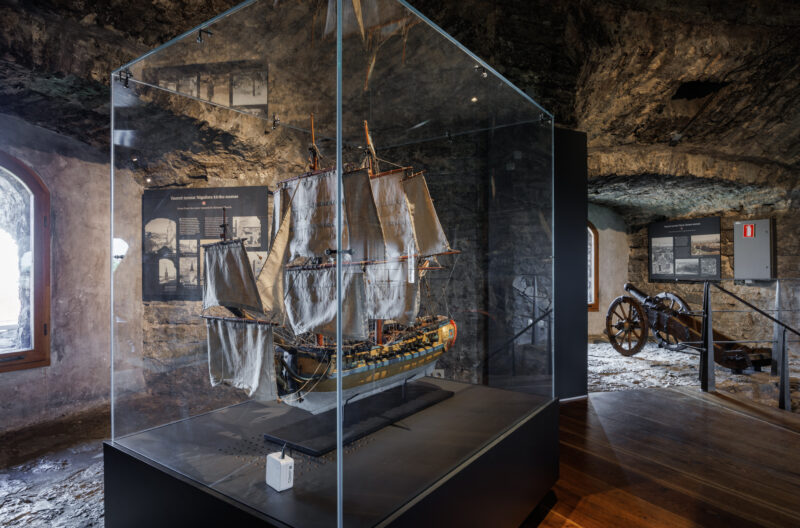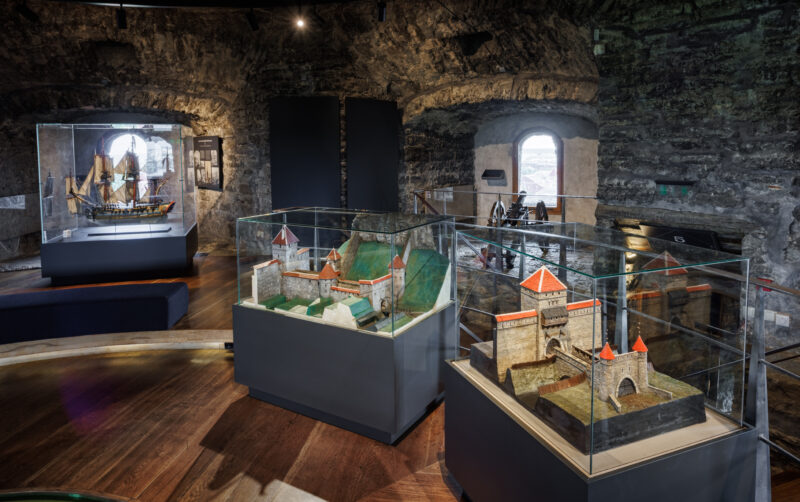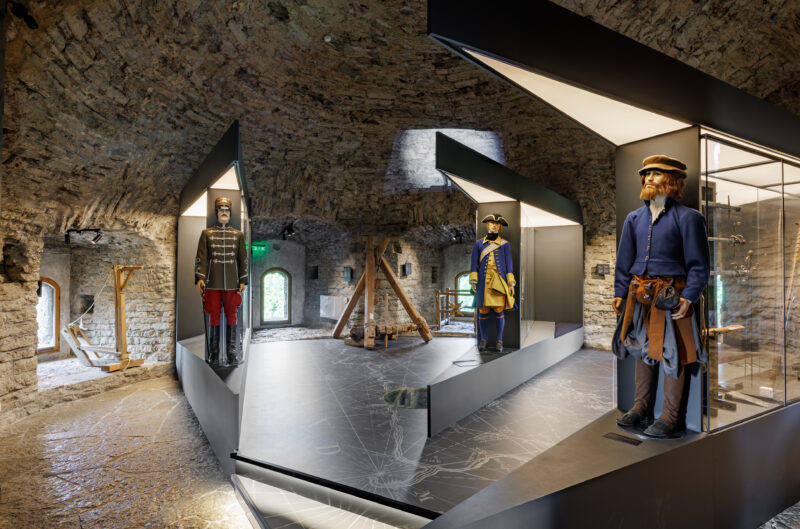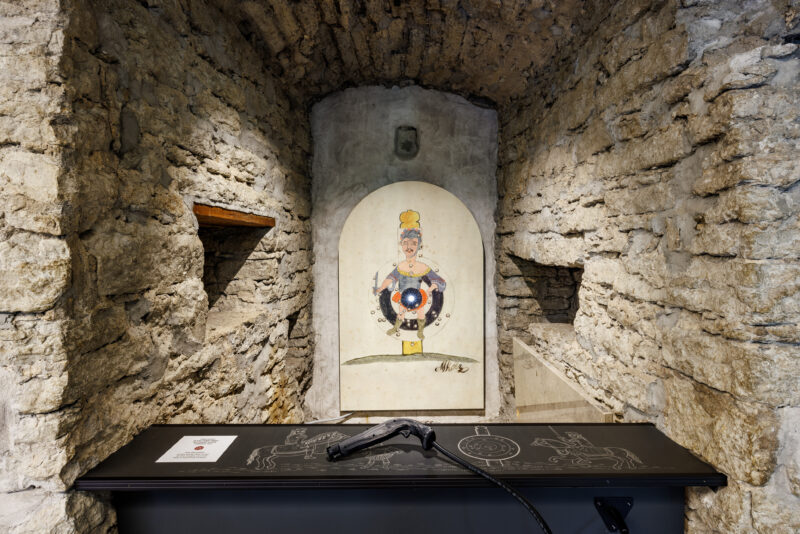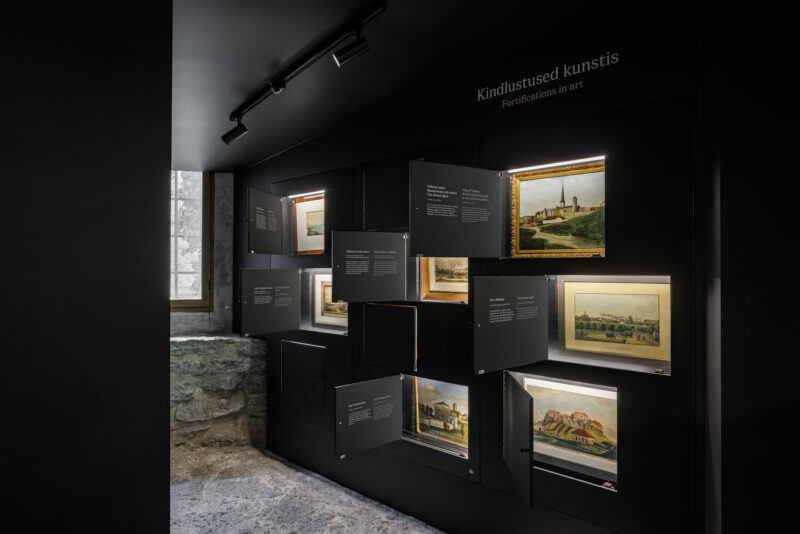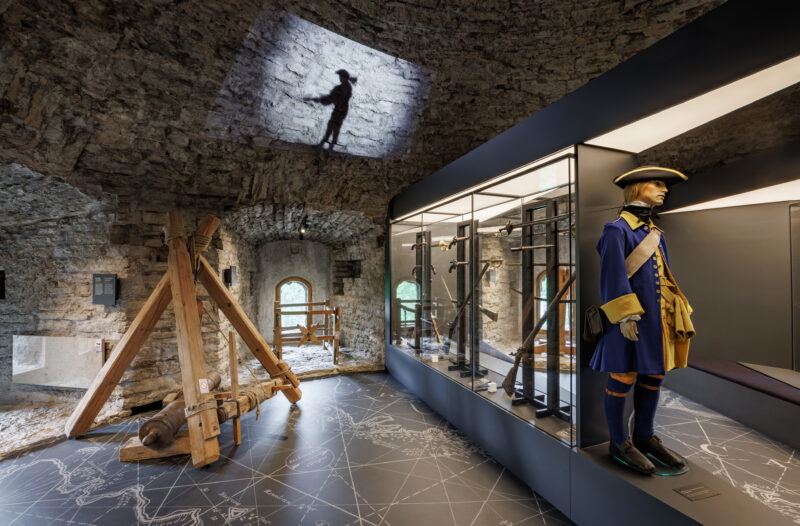Kiek in de Kök
/ The exhibition project was completed in cooperation with Lumia architects /
“A Fortress City, A Safe Haven”
The permanent exhibition of Kiek in de Kök, Tallinn’s most powerful medieval defense tower, tells the story of how the people of Tallinn have fortified and defended their hometown throughout the centuries.
Built at the end of the 15th century, Kiek in de Kök is the tallest of Tallinn’s defense towers (49 m) and one of the Baltic Sea countries’ most powerful medieval artillery towers. The powerful landmark played an important role in protecting the city and saving all of Estonia from falling under Russian control in the 16th century. This also meant remaining in the Lutheran cultural space.
The tower’s permanent exhibition respects the historical milieu and creates an excellent environment where to learn about history. How heavy were the cannonballs, how to fight with a sword or fire a cannon? You can try a lot of it yourself at the exhibition. The representative weapon collection of the Tallinn City Museum introduces the development of warfare through the centuries. You can also see the 15th-18th century cannons used in Tallinn and learn how to make gunpowder.
The tower has been a manifestation of the townspeople’s will to protect themselves. It was the Köki tower that played an important role in the defense of Tallinn in 1570–1571, when the Muscovites failed to capture the city during the seven-month siege, and especially in 1577, when the Russian troops were repulsed from under Tallinn. In 1571, in honor of Tallinn, church bells were rung all over Europe. The day of liberation from the siege, March 16, was declared a holy day forever by the Tallinn City council.
“Aut Aut vincendum, aut moriendum — victory or death.
Brotherhood of Black Heads in defense of Tallinn”
On the 0th and 1st floors, you can learn about the contribution of the Black Heads Brotherhood, an organization of Tallinn apprentices and unmarried merchants, to the protection of the city throughout the centuries. Merchants who received military training participated in the battles of the Livonian War (1557–1583), formed a representative cavalry unit, and were the founders of Tallinn’s first volunteer fire brigade.
